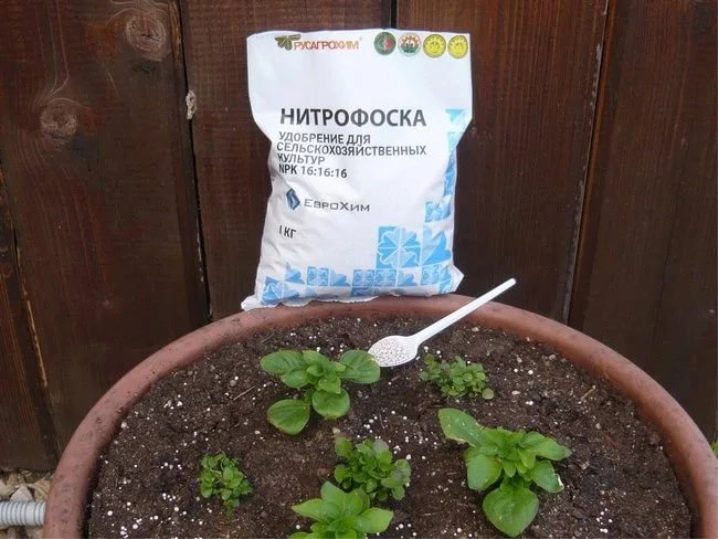Views
The variety of spray petunias is amazing: thanks to the richest color palette and unpretentious care, this flower is a real favorite of Russian flower growers. They highlight the popular bush varieties, which are described below.
Daddy
Differs in large inflorescences, flowering is abundant. The bush usually does not exceed a height of 25 cm. It is quite resistant to bad weather, therefore it is very popular among Russian flower growers. The variety perfectly tolerates draft, rain and drought. Ideally develops under diffused light.
With the help of this variety, you can decorate any containers, summer cottages and balconies. The color scheme is diverse - it can be blue, white, deep pink and scarlet.
Pikoti
Flowering has a large developmental variant with different shades. The petals are distinguished by a white border. This option is quite unpretentious to climatic conditions, calmly withstands high humidity, rain.
The height of this variety reaches about 25 cm. Picoti blooms throughout the summer and warm autumn. Can be grown in different containers.
Storm
This variety is not afraid of strong wind and moisture, so it feels perfect on the street, but requires planting in nutrient soil. Inflorescences are round, large type. Plants are resistant to various diseases, such as gray mold. Lingering rains will not be a hindrance to him.
The bush is tall - up to 35 cm. The color range includes white, purple, blue and red flowers.
Polaris
This type of plant will perfectly withstand various climatic troubles. Flowering begins very early and continues until cold weather. The bush reaches a height of 30 cm. It grows well both in the open field and in pots, baskets.
Ultra
These are rather wide and tall bushes, decorated with large and expressive flowers, which are distinguished by a chic opening and an original wavy edge. It is a fairly strong, resistant plant that thrives very well in all weather conditions.
Dreamms
This variety is a large-flowered hybrid. It is quite compact in size, has a rich development of branches. The height of the stem can reach 40 cm, the diameter of the flowering is 13 cm.
The variety is endowed with a pronounced aroma, blooms very profusely with red funnels. Drimms is used in all types of landscaping, as it is completely unpretentious. It gets along well with other flowers in the flower bed.
Fantasy
The flowers of this variety have a wave-like shape, bright, with a wide variety of colors. They differ from other varieties in the duration of the decorative appearance, in a short development period, in durability.
Hit parade
It is a very neat plant, decorated with small leaves, with a flowering that forms very early. The color scheme ranges from pale lavender to purple-blue.
Titanium
Differs in erect bushes with dense branching and compact size. The bush does not exceed 45 cm in diameter, and reaches a height of about a quarter of a meter. This species has light, large oval leaves. The flowers are endowed with a pinkish color and fringe along the edges. In the middle, the inflorescence has a light beige tint.
Triumph
This is a very beautiful variety, very large flowering - up to 16 cm in diameter. The petals are of the type of corrugation in the edging and all kinds of shades of pink palette. In the center, the flowers are darkened, and the petals are striped. The variety is quite sensitive to prolonged torrential rains.
Limbo
This is a low-growing bush, no more than 20 cm in height, but the flowering is rather large - at least 12 cm. This variety is distinguished by early flowering, multicolor, and resistance to bad weather.The color palette is wide - it is peach, and purple, and delicate rose, as well as silver, purple and white.
Plant features
The word ampelous comes from the German ampel - vase. All ampelous plants are characterized by long creeping or falling shoots. Ampel petunia has elongated shoots up to 120 cm inherent in such plants with graceful bells of flowers, suitable for planting in hanging pots or tall vases, boxes. It is also suitable for creating a flower cover. One plant can cover up to 2 m of land with a uniform carpet.
A feature of ampel petunias is that the stems are directed downward, in contrast to the cascade one, in which the shoots first grow upward, then, having reached a certain length, they grow downward. Otherwise, such petunias differ little from other species.
The color palette of ampel petunias is wide enough: all shades of pink, purple, white, yellow and others. The size of flowers in different varieties is also varied - from small to large, similar to a carnation (there is a lot of information about all varieties of begonias here).
There are also ampelous and semi-ampelous petunias, which differ in the length of the shoots.
The difference between ampelous varieties of petunias and cascading ones is described here.
How to choose a planter for a petunia
As a rule, not all of the so-called "mother" plant, which has been growing in the country house all summer long, is dug out for the winter, but its cuttings are planted - petunia perfectly propagates by cuttings, takes root, after which the babies grow quickly.
If you still decide to plant the entire plant, be sure to remove the lower leaves from it, which may be affected by rot or disease.
After that, cut off all the stems and shoots so that no more than 12-15 cm remains of them.After all these manipulations, you can plant the plant in a suitable pot, observing the following conditions:
- the pot needs to be selected not very large, but wide enough and necessarily in the form of a flowerpot on a leg - petunia stalks will hang down as they grow and fall beautifully on the sides of the pots. The pot with the plant should be placed in a bright cool room and left until about the end of February, watering a little so that the soil does not dry out completely;
- if you plant and root the petunia with roots, while you are not going to form a round small bush out of it in the future, but intend to enjoy colorful flowers, you need to plant at least 3-5 plants in a prepared pots, then as the petunia grows it will look really elegant ... Petunias have long stems and all the beauty of this plant is fully manifested precisely when the shoots, decorated with flowers, fall at the base of the container. In the open ground, ampelous petunia simply spreads along the ground, but on the balcony you can arrange real blooming waterfalls;
- at the same time, you can pick up petunias of the same color, or you can plant cuttings of different plants in one pot so that they look contrasting - then the flower arrangement will be even brighter. One potted plant will look poor. Remember that petunias are both simple, which amaze with an incredible variety of colors, and terry, which, in turn, surprise with an exquisite shape of inflorescences and fringed petals. However, terry petunias do not bloom as abundantly and lastingly as ordinary ones, and do not have such a rich palette of shades.
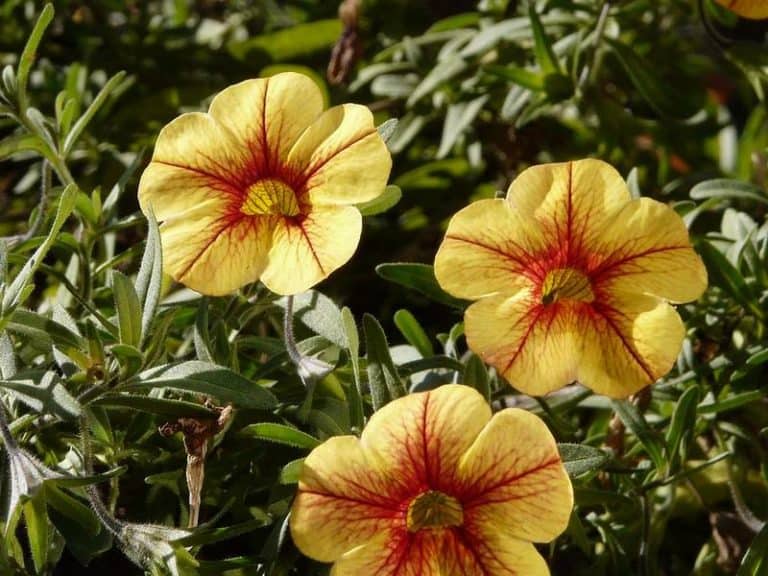
It is on the basis of the above conditions that you need to select a pot for your petunias.
How to water a potted plant?
When you put the pot outside under the open sky, you need to artificially water the petunia as little as possible. Count on rains to moisturize the soil. But if the flower is under a canopy, the soil needs to be moistened every day.
Please note that too much water can cause rotting of the plant's root system. The pot should have holes through which excess moisture will escape.

It is not worth "overflowing" the flower
Flowers that stand outside without any canopies may well be injured by heavy rain or hail. In case of an unexpected deterioration in the weather, it is necessary to cover the petunia with cellophane. If the petunia is still affected by unfavorable weather conditions, the flower will return to normal within a week. If the bushes become less frequent, they will bloom even better.

It is better that there are holes in the pot through which excess moisture will escape.
To provide the necessary moisture without damaging the roots, you can use a spray - just sprinkle water on the leaves. You cannot do this in hot weather, especially at noon - it will burn the leaves.

It is recommended to spray water on the leaves
Formation of ampelous petunia
The genetics of ampelous petunias are designed for the formation of lush, branched bushes. Adult perennials do not need shaping. However, they need to remove the blooming buds and seed pod. Compliance with this condition makes it possible for the petunia to redirect its forces to the formation of other buds, which can bloom magnificently and delight the owner.
Note! In a cool and humid period, the bush will need additional attention, since prolonged rains contribute to the development of a fungal infection, which negatively affects flowering. To achieve normal ventilation of the bushes in order to prevent the occurrence of such a disease, they should be thinned a little
To promote the active growth of lateral shoots and the correct formation of ampelous petunias, pinching of the main shoot should not be ignored. How to do it:
- The process of seedling formation begins early enough. Pinching is carried out at the moment when the fifth leaf appears on the bushes.
- The upper part of the stem of the seedling is removed, which promotes the growth of dormant lateral buds on the stem.
- Thanks to the pinching, new stems begin to form on the bush, growing to the sides and up.
- In some cases, the procedure can be carried out several times, which allows you to achieve the maximum density of the bushes. Re-pinching is carried out with an interval of 30 days. For the convenience of removing the stems, you can use a sharp stationery knife or scissors. A pruner is used to trim an adult petunia.
- After the procedure for forming an ampelous bush, the green mass begins to grow vigorously. During pinching, experienced florists recommend applying top dressing.
- For each approach, pinching can remove only a third of the herbaceous perennial. Removing a large part of the herb at a time can kill the bush.
Important! It is unacceptable to pinch with your hands. Such a procedure damages the stem and provokes decay.

Pinching ampelous petunia
DIY pot
If the petunia will be in a warm room, it is best to choose wood, plastic or ceramic for the pot. When placing the plant outside the house - in the winter garden or on the veranda - it is better to choose fireclay clay or faience. Pots need pallets. Also, the water must be able to drain off.

Better to plant petunia in a clay or ceramic pot
In general, such a device is not necessary, but it is quite aesthetically pleasing.
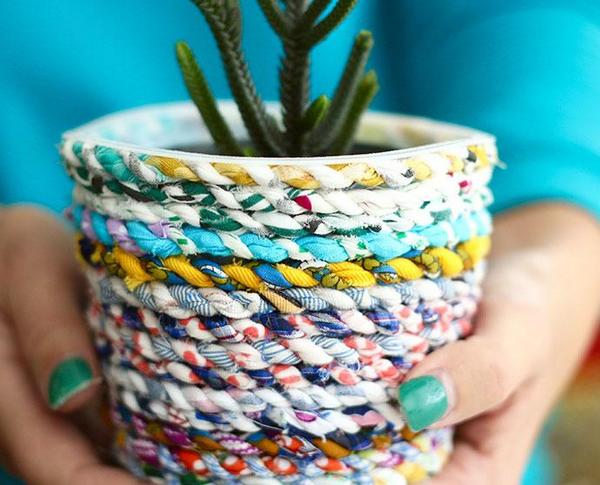
The pot can even be made from scrap materials.
The pot can be made from literally any materials at hand. Flowers will feel great in it, but it can decorate your home or garden without plants. For example, there is a red cat-flower bed.
To make such a pots, prepare:
- a large plastic bottle;
- cement, gypsum, water, sand;
- wire;
- wooden slats;
- sandpaper;
- paint;
- varnish.
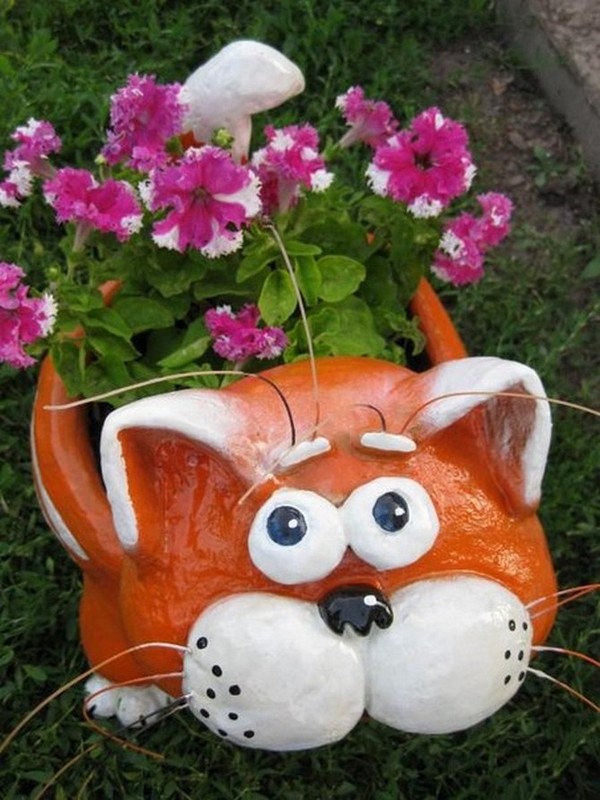
You can make a pots, for example, in the form of a cat
Actually, the bottle is the main part of the flower garden. First you need to cut it off. The main part is covered with cement. To prevent slipping, it is advisable to use a wire. The frame is made of rails, and then a prepared container is tied to it.Of course, at first your "craft" will not look like a cat, but over time the forms will become quite definite.
We make a sand-cement mortar. The ratio should be one to one. The consistency of the resulting mixture ultimately resembles thick sour cream. In no case should you add gypsum here, because then the mixture will immediately solidify. Wearing rubber gloves, mix a tablespoon of plaster of paris with a handful of mortar. We wrinkle with our hands, seeking a sausage or a ball, then we fix it on the frame, observing the shape we need. The cat's muzzle must be made from balls. For simplicity of the process, imagine that you have plasticine in your hands.

Make pots out of cement
You need to polish the body with a wet hand. The result of your efforts should not crack. To protect it from cracks, you need to dry the pots under cellophane for four days. When drying the first day, the cat needs to be moistened a number of times. When the planter is ready, you need to sand the surface with sandpaper. The figurine is painted with car paint and then varnished.

Cat pots
Diseases characteristic of petunias
If you care for your flower correctly and scrupulously, most likely it will not get sick with anything. However, sometimes you can face such a disease as black leg. The plant is sick with it due to excessive fluid intake or due to crowding of flowers in a pot. For treatment, diseased specimens with a large amount of soil must be removed from the general container. Nearby flowers need to be treated with fungicides.
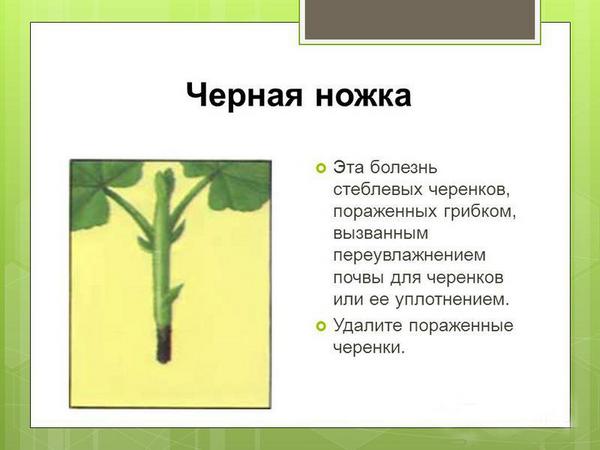
Blackleg
Petunia can also get sick with powdery mildew. This problem can occur in a flower that is constantly exposed to changes in temperature and humidity.
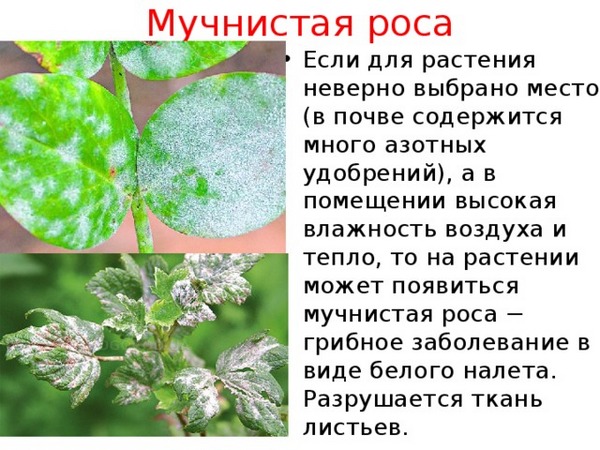
Powdery mildew
Popular ampelous varieties
At the moment, F1 hybrids are the best choice, especially for a beginner grower, as they are the most hardy and resistant to adverse conditions. We offer brief descriptions of some of the popular varieties of ampel petunias.
Wave F1 seriesShoot length up to 120 cm, flower diameter 5-7 cm. The shade of the petals can be blue, purple, pink. The flowering is profuse and long lasting. The plant is resistant to adverse weather conditions; when planted in open ground, it creates a carpet.
In the photo - ampelous petunia of the Easy Wave variety (Blue)
Velvet F1 series Shoots length 0.8-1 m. Flowers 5-7 cm in diameter, dark pink, salmon or purple. Blooming later. An interesting difference of the variety is the abundance of nectar in flowers, due to which they are especially attractive to bees.
In the photo - petunia (surfiniya) Purple Velvet
Opera Supreme F1 series Shoots up to 1 m, strongly branching. The variety is characterized by reduced sensitivity to lack of light. Flowers 5-6 cm in diameter, petals can be pink, blue, white, crimson.
In the photo - petunia Opera Supreme (Raspberry Ice)
The Snow Queen The name of the variety is quite justified: its flowers are only white. They have a delicate pleasant aroma. The diameter of the corollas is small, up to 3 cm, but the flowering is very abundant. The shoots are rather short - up to 80 cm.
Seeds of petunia "Snow Queen" of various manufacturers
Explorer Series Spines 0.8-1 m, windproof. Flowers 5-7.5 cm in diameter. Flowering begins early and lasts until autumn. The features of the variety include a wax coating on the petals, due to which the flowers are resistant to precipitation and high humidity.
In the photo - Petunia Explorer (Pellets Pink)
Growing petunias
Growing hybrid petunias is possible from purchased seeds or cuttings. Seeds are planted in February, in cold regions - in March, slightly pressing, but not burying into the soil. Some growers prefer to plant in the snow.
At first, boxes with seedlings are kept in a greenhouse at a temperature of about + 23 ℃. After the emergence of seedlings, they begin to ventilate. The temperature is gradually reduced to +16 ℃. Plants dive into separate containers after the appearance of 3 leaves. After another month, the petunia is transplanted to a permanent place.
For grafting, cut off shoots of 8-10 cm and placed in loose soil. You can read more about the propagation of petunias by cuttings in the article on our website.
Flowering plant in a pot
You can also buy seedlings or an adult flowering plant. Keep them free from damaged or rotten areas or pests such as whiteflies or aphids.
Care features
Like all petunias, terry varieties need to be watered every day, in the heat - in the morning and in the evening. They need good lighting: due to a lack of light, the plant loses its decorative appearance, forms few buds. Protection from adverse weather conditions is especially important - rain or wind can deform large flowers or break shoots.
It is imperative to pinch withering flowers, otherwise the plant will spend energy on the formation of seeds, therefore, the formation of new buds will decrease.
If the conditions are right, the plants can overwinter and continue to develop in the next season.
In its natural habitat, petunia is a perennial, but in the middle latitudes it is difficult to create suitable wintering conditions for it, therefore all varieties are usually grown as annuals. If you still want to save the plant for the second year, in winter it should be kept in a bright room with a temperature of up to +10 ℃ and watered about once a week.
While most terry varieties need daily grooming, their expressive beauty will be a worthy reward for your efforts!
How to care?
The success of growing calibrachoa largely depends on whether it is possible to protect the plant from the winds and provide the required temperature regime. Since in the fresh air it is not always possible to maintain all indicators optimal, most gardeners prefer to place calibrachoa in an apartment. Home care will allow, if necessary, to use artificial light lamps, as well as reliably protect from drafts.
In winter, the plant should be kept in a fairly humid and not cold room, with a temperature of 5 to 10 degrees Celsius. In this case, in the spring it will be possible to cut off the clothespins and use them for further reproduction, and the flower itself will be able to bloom again.
Watering
In order for calibrachoa to develop normally, the soil needs to be irrigated regularly to maintain moisture. However, you should not fill the pot either, because this always leads to rotting of the root system. Regular spraying with settled water that has reached room temperature is considered much more effective. It is better to do this several times a day. Irrigation itself is carried out weekly, and the liquid always flows under the root
If the plant lives in the open air, it is important to ensure that rain streams do not fall directly on it.
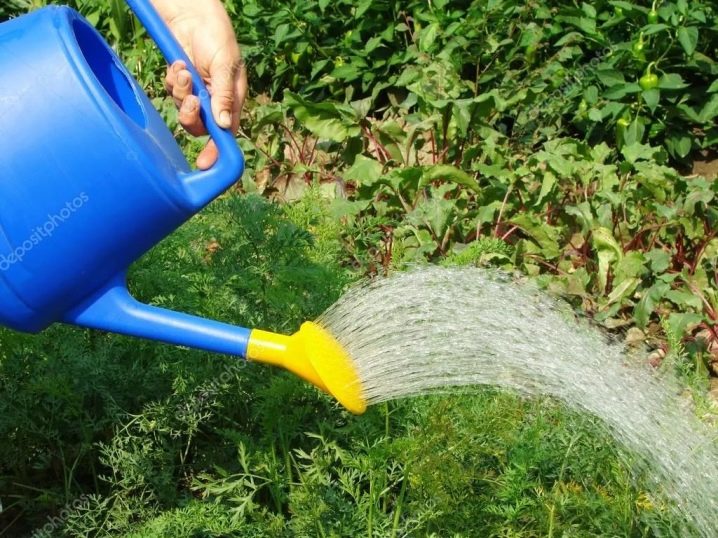
Fertilizer
After the calibrachoa moves to its permanent habitat, a specific fertilization system should be developed. It is not allowed to immediately use organic matter like manure, as it becomes an excellent soil for the development of fungal diseases.
It is better to take mineral solutions containing phosphorus and potassium, or compost. Top dressing carried out in early spring contains nitrophosphate. This component simplifies the transition of the plant during the growing season. It should be added that one specimen, as a rule, requires from 1.5 to 2 kilograms of land, providing the necessary supply of nutrients. In the absence of top dressing, each season will have to completely change the substrate.
